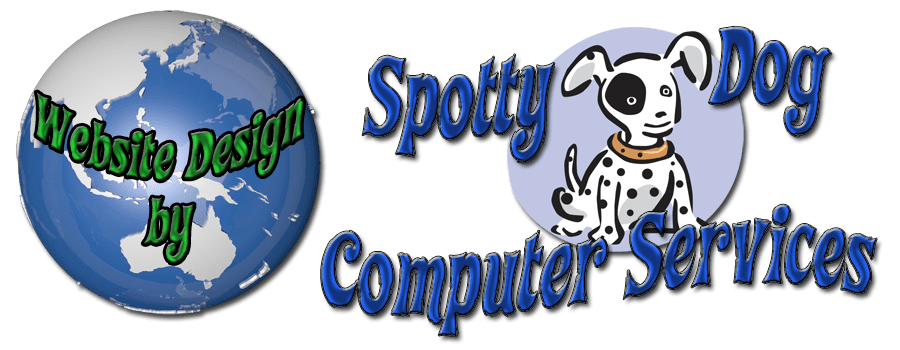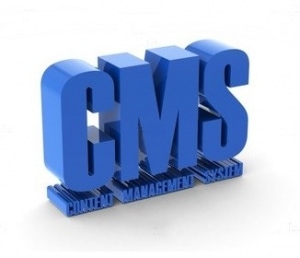Posts
Why we use WordPress for Websites
/in CMS, Open Source, SEO, Website Design, WordPress, WordPress Themes/by Admin
There are many reasons we use WordPress for the basis of our Web Designs. First and foremost for me it’s because WordPress is by far and away the easiest to learn and understand.
But here is a detailed list of the reasons and advantages to using WordPress:
- It’s FREE and Open Source – Being an Open Source Project, WordPress is completely free to use, forever!!!. Being Open Source means that there are people around the world continuously contributing to the project and improving it with extra features and improved security.
- An Abundant Array of Plug-in’s – If you need to add a particular function to your WordPress website, you can almost guarantee that there is a Plug-in available to do it. There are Plug-in’s for SEO, Contact Forms, Buttons, eCommerce, Photo Galleries, Guestbooks and Forums, Social Networking and the list is endless. By and large, the majority of plug-in’s that you would want to use are also free, with Plug-in developers offering “paid for” versions which add some extra features, or support for a fee.
- User Friendly CMS – In my opinion, WordPress has to be the easiest and most flexible Content Management System (CMS) around. I have used others, but WordPress is very intuitive and there is a wealth of information and help forums online if you get stuck.
- Themes let you “Style” the look – The way your WordPress website looks, feels and behaves is determined by the Theme used. So if you get sick of the look, or just feel like a change, you can achieve this by simply uploading a new Theme, activating it, and hey presto, there you have it. Of course it isn’t quite as easy as that because the reality is that some content may not suit the new styling, but there is nothing that is overly difficult to overcome.
- Your website can grow with you – Your WordPress website can grow with you and you can easily upgrade it with new features and security. You can change your Theme at any time without the need to re-do your whole website. Plug-in’s can be added for enhanced functionality (add e-commerce if your business grows, a photo gallery, conatct forms, etc.). WordPress is used by millions of websites, so it won’t be going away in a hurry.
- Good for SEO – Over the years I’ve used various SEO plugins including All-In-One SEO, WordPress SEO by Yoast, and Google XML Sitemaps. But even without these plugins, the simple structure of WordPress, the permalinks, and the easy linking in WordPress is Google friendly. I even heard a statement directly from the horse’s mouth Matt Cutts (the head of Google’s “Web Spam Team”) when he spoke at WordCamp San Fransisco 2009 where he said, “WordPress is a great choice” and went on to say how much “WordPress automatically solves a ton of SEO issues“. Don’t believe me, see for yourself below.
CMS Websites at risk from Hackers
/in CMS, Hackers, WordPress Security/by AdminContent Management Systems (CMS) websites like WordPress have long been a target for Hackers.
CMS systems like WordPress are popular because they are free and Open Source, and very flexible to such an extent that just about anybody can create a Website, or Blog, or eCommerce website with relative ease.
The problem is that a lot of website owners either fail to keep their CMS and plug-in’s up to date.
New versions of the platform and plug-in’s are regularly released, not just to improve functionality, but to plug security holes.
This is why Hackers love to target CMS websites. It’s because they know there is a high chance of discovering an unpatched website.
Even if you do keep the platform and plug-in’s up to date, you must also do a few other things.
Here is a checklist:
- Use a strong Password – You must not use easy to guess and simple passwords. Never use “Password” as your password for example. Also avoid using dictionary words, pets names, family members names etc. Use Upper and Lower case letters in combination with numbers and keyboard characters like @#$%^&* if possible. If you find it difficult, try substituting some letters with characters or numbers. For example MyPassword2013 could become MyP@55w0rd2013.
- Use a good Security Plug-in – My favourite Security Plug-in is Better WordPress Security. Among the things it does is:
- Change the urls for WordPress dashboard including login, admin, and more
- Rename “admin” account
- Change the ID on the user with ID 1
- Change the WordPress database table prefix
- Change wp-content path
- Ban troublesome bots and other hosts
- Ban troublesome user agents
- Prevent brute force attacks by banning hosts and users with too many invalid login attempts
- Enforce strong passwords for all accounts of a configurable minimum role
- Detect and block numerous attacks to your filesystem and database
- Add CAPTCHA to your User Log-in – I like to use another Plug-in called SI-CAPTCHA Anti-Spam. Not only does it add CAPTCHA to your Log-in, but to WordPress forms for comments, registration, and lost passwords too.
It may sound daunting, but if you have your website hosted and maintained by Spotty Dog Computer Services, all the updates are included in our Monthly Maintenance Fee. And as an added bonus, if a Hacker does manage to compromise your website, we make regular backups so we can restore your website if it all turns pear shaped 🙂
What your Business should look for in a website
/in Business Website, CMS, Website Design/by AdminThere are several things you should be looking for when getting a website developed for your business.
Below is a list of the top seven considerations that I believe are the most important.
- It should use a Responsive Theme. This has been touched on in the content on our Home Page, but it’s worth reiterating it here because I think it’s the Number One consideration. A Responsive Theme will adjust itself to display well and correctly as the screen size of the device used changes. So in other words, if you view a website on a 24″ Desktop Monitor, and then a Laptop, and then a Tablet and then a Mobile Phone with a small screen, the website should adapt and be usable on all the different screen sizes and resolutions. Images should scale themselves down as applicable, and the Navigation structure should adapt as well. So why is this so important? Well the use of mobile devices and tablets to access the Internet has skyrocketed in recent times, nowhere more so than in Australia where our population has embraced the use of mobile devices.
- It should have Cross Browser compatibility. Not everyone uses the same Internet Browser. Some people prefer Internet Explorer, or Firefox, or Chrome, and if you are using a Mac or iPad, then it’s most likely to be Safari. In each case however, your website needs to display correctly. If your business website does not display as intended, and parts of it are not where they should be or missing, then that will present an unprofessional look for your business and possibly result in a lost sale.
- It should contain quality and relevant content. Again, this has been touched on in the content of our Home Page, and what I am referring to is SEO or Search Engine Optimisation. You can have the best looking website in the world, but if the content on the pages is not well written and relevant to your business and you are not targeting key words related to your industry, then you may as well not bother. Take the time to do some Key Word Research, do a Google Search for some keywords and then check out the competitions websites to see what they are doing to get those top rankings. You can’t guarantee you will get the same results, but it sure is better than doing nothing.
- It should be easy to navigate and find things. There is nothing worse than visiting a website and finding multiple navigation structures. Some things can be found in the top menu, other things in a side menu and yet further things in the footer. Now having said that, there are some valid reasons for doing this. For example, on this website you will find our “Website Terms of Use” and “Privacy Policy” in the Footer and not on the Main Menu. This is because they are not the sort of thing most visitors would be looking for. Everything else however, should be accessible from the Main Menu and you shouldn’t have to guess where to look. You should also have some sort of Search capability. I use two different types of Search, depending on whether there is eCommerce involved or not. If eCommerce is involved, then a Predictive Search plug-in is useful. A Predictive Search will display a list of results as you type, and is handy for visitors looking for a particular product.
- It should look clean. Now this one is a hard one to quantify as beauty is in the eye of the beholder. Colours that I would say are garish, have been insisted on when I have designed websites for some customers. All I can say is that just as you wouldn’t normally paint the walls of your house bright pink, so should you NOT do the same on your website. Your logo may well incorporate bright orange and yellow, but that doesn’t mean it should permeate through the pages of your website. It may even detract from the message or products you are trying to highlight.
- It should allow visitors to engage via Social Media. Now this one is the thing that most Business Owners struggle with. The number one thing that I hear when I mention this is, I don’t want anything to do with that S*#!@. Let me tell you that I hear you. The fact of the matter though is that more and more people are using Social Media to communicate, shop, find out information, share information, and it can affect your Search results if you do not have a Social Media presence. As much as we might dislike it, it is now part of online life whether we like it or not.
- Make sure you own the Website and Domain Name. I can’t count how many people have come to me after having their website designed by another company, being dissatisfied, and then wanting to transfer the Management of the website to us. But when you ask for the log-in details for Domain Name Management, FTP log-in credentials, Website Hosting Account log-in credentials, and they don’t have them and the web designer won’t provide them. Worse still, they have registered the Domain Name and Hosting Account in their name instead of the Business Owner, and setup the website so the Business Owner does not have full Admin control of the website. This makes it almost impossible to transfer to a different Domain Registrar and Hosting Provider, and at the very least a frustrating and time consuming exercise. So the lesson here is, make sure you are the owner and point of contact for your Domain Name, Website Hosting and that you have full Admin control of your website.
Content Management System (CMS)
/in CMS/by AdminAll of our websites employ the WordPress platform as the basis of your website. WordPress is a free and open source content management system (CMS) based on PHP and MySQL. It’s features include a plug-in architecture and a template system. As of Aug 2013, WordPress is used by over 18.9% of the top 10 million websites. WordPress is the most popular CMS system being used on the Web today. It was first released on 27th May 2003, by founders Matt Mullenweg and Mike Little. As of April 2013, version 3.5 had been downloaded over 18 million times. It is a Content Management System (CMS) which basically means that you can log-in to the website and make changes yourself instead of relying on the web designer to make changes on your behalf. At your convenience, you will be able to add/remove pages, edit page content, add/edit or remove images, and if it is an e-Commerce website, you can add/remove and edit your products too.
Services
Custom WordPress Websites – Customised Themes and Unique Websites.
Domain Names – Domain Name Registrations and Transfers.
eCommerce Solutions – eCommerce made simple.
Email Hosting – Purchase Email Hosting.
SEO (Search Engine Optimisation) – Optimise your website for better Search Results.
Website Design – Website Design, Maintenance and Development.
Pages
Business Hours
Our contact number is:
(07) 5428-7905
- Monday-Friday: 8:30am to 4:00pm
- Weekends: Closed
- Public Holidays: Closed



